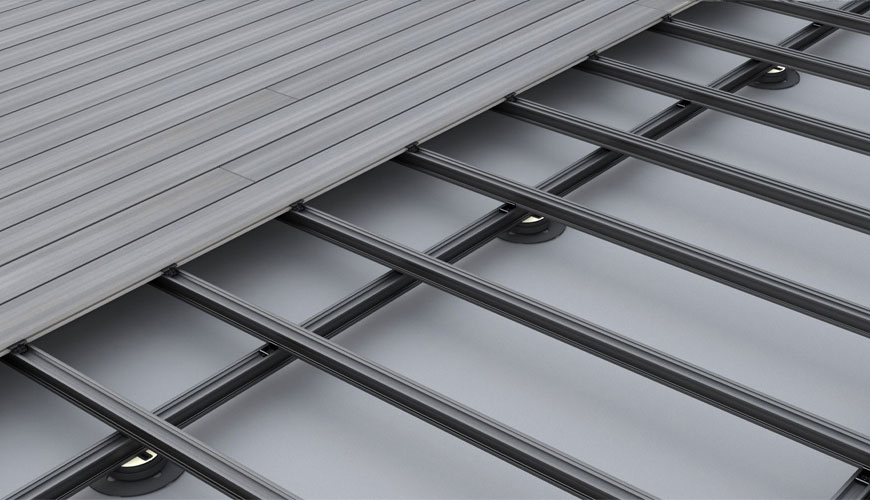

EUROLAB laboratory provides testing and compliance services within the scope of ASTM E111 standard. The ASTM E111 standard covers the determination of Young's modulus, tangent modulus, and beam modulus of structural materials. This test method is limited to materials and to temperatures and stresses at which creep is negligible compared to the strain and elastic behavior immediately after loading.

Due to experimental problems with the origin of the stress-strain curve, determining the initial tangent modulus (i.e., the slope of the stress-strain curve at the origin) and secant modulus is beyond the scope of this test method.
The value of Young's modulus is a useful material property in design for calculating the fit of structural materials following Hooke's law when subjected to uniaxial loading (i.e., strain is proportional to applied force).
For materials that follow nonlinear elastic stress-strain behavior, the value of the tangent or beam modulus is useful in estimating the change in strain for a given stress range.
For many materials, Young's modulus in tensile is different from Young's modulus in compression, so it must be derived from the test data obtained in the respective stress mode. The accuracy and precision of apparatus, test specimens, and procedural steps must be consistent with the material being tested and a reference standard, if applicable.
Precise determination of Young's modulus requires consideration of a large number of variables that may affect such determinations. These include the properties of the sample, such as the orientation of the grains with respect to the stress direction, grain size, residual stress, previous strain history, dimensions, and eccentricity; in the elongation values used to determine the test conditions, such as the alignment of the sample, test speed, temperature, temperature changes, the condition of the test equipment, the ratio of the error in the applied force to the range in the force values, and the ratio of the error in the elongation measurement to the range; and interpretation of data.
When the modulus is determined at strains exceeding 0.25%, the original values will be replaced by the instantaneous cross-section and instantaneous gauge length, and corrections will be made for the changes in the cross-section area and gauge length. Compression results may be affected by the barrel. Therefore, strain measurements should be made in the sample region where such effects are minimal.
The test uses an electromechanical or hydraulic universal testing machine that can apply force in both tensile and compressive directions and is equipped with appropriate specimen grips, an extensometer, and software. If calculations are to be made at high temperatures, an oven that can provide a homogeneous temperature should be used.
Values stated in SI units should be accepted as standard. No other units of measurement are included in this standard.
This standard does not purport to address all, if any, safety concerns associated with its use. It is the responsibility of the user of this standard to establish appropriate safety, health and environmental practices and to determine the applicability of regulatory restrictions prior to use.
Our organization, EUROLAB, provides standard test method services for young, tangent and chord modules, within the framework of national and international standards, with its trained and expert staff and advanced technological equipment, among numerous test, measurement, analysis and evaluation studies. Provides testing services within the scope of ASTM E111 standard.
To get an appointment, to get more detailed information or to request an evaluation, you can ask us to fill in our form and reach you.